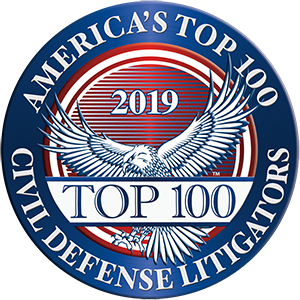New legislative changes will significantly impact litigation strategy for an important motion in civil and probate courts. Effective January 1, 2025, Assembly Bill No. 2049, introduces new deadlines and procedural rules that will affect how summary judgment motions are handled in your case. Understanding these changes is crucial for effectively managing your litigation strategy and costs.
This new law brings about three significant changes. First, it would increase the deadline for a party to file a motion for summary judgment or summary adjudication to at least 81 days before the hearing on the motion. Second, the law would increase the deadlines for filing an opposition to at least 20 days before the hearing and for filing a reply to at least 11 days before the hearing. Third, the law would prohibit a party from filing more than one motion for summary judgment against an adverse party without leave of court, as specified. Finally, this new law would also prohibit the introduction of new facts in a reply to an opposition to a motion for summary judgment, as specified.
Below, we provide a detailed comparison of the old and new rules, along with an analysis of how these changes may influence your litigation goals.
Comparison of Old and New Rules
- Deadlines for Filing and Responding to Motions
Old Rules:
- Motion for summary judgment or summary adjudication: 75 days before the hearing.
- Opposition to the motion: 14 days before the hearing.
- Reply to the opposition: 5 days before the hearing.
New Rules (Effective January 1, 2025) and codified in CCP § 473c(a):
- Motion for summary judgment or summary adjudication: 81 days before the hearing.
- Opposition to the motion: 20 days before the hearing.
- Reply to the opposition: 11 days before the hearing.
- Limitations on Filing Motions
Old Rules:
- No specific limitation on the number of summary judgment motions a party could file.
New Rules (Effective January 1, 2025) and codified in CCP § 473c(a)(4):
- Parties are prohibited from filing more than one motion for summary judgment against an adverse party without leave of court.
- Reply Briefs
Old Rules:
Parties could introduce new facts in a reply to an opposition to a motion for summary judgment but it was at the court’s discretion.
Jacobs v. Coldwell Banker Residential Brokerage Co., 14 Cal. App. 5th 438,
Los Angeles Unified School Dist. v. Torres Construction Corp., 57 Cal. App. 5th 480,
Wall Street Network, Ltd. v. New York Times Co., 164 Cal. App. 4th 1171.
New Rules (Effective January 1, 2025) and codified in CCP § 473c(b)(4):
Parties are prohibited from introducing new facts in a reply to an opposition to a motion for summary judgment.
Legal Analysis and Impact on Litigation Goals:
Extended Deadlines
Impact: The extended deadlines provide more time for both parties to prepare their motions and responses. This can lead to more thorough and well-prepared arguments, potentially increasing the chances of success for both sides. However, it also means that the overall timeline for resolving summary judgment motions will be longer, which could delay the resolution of cases.
Strategy: Clients should work closely with their legal teams to ensure that they utilize the additional time effectively to gather evidence and craft compelling arguments.
Limitations on Filing Multiple Motions
Impact: Limiting parties to one summary judgment motion without leave of court encourages more strategic use of this procedural tool. It prevents parties from overwhelming the court and the opposing party with multiple motions, which can be costly and time-consuming.
Strategy: Clients should carefully gather all the necessary evidence needed for a summary judgment motion as only one attempt if provided under the new law. Seeking leave of court for additional motions should be reserved for cases where there are significant new developments or evidence. However, the statute does not specify whether parties could file multiple summary
adjudication motions, meaning attorneys could still bring a summary adjudication motion to decide one cause of action.
Prohibition on Introducing New Facts in Replies
Impact: This change promotes fairness by ensuring that all relevant facts are presented upfront, giving the opposing party a fair opportunity to respond. It prevents the practice of “sandbagging,” where new facts are introduced at the last minute, catching the opposing party off guard. The statute includes the word “shall” and leaves no room for the court’s discretion to accept new evidence as previously allowed by case law.
Strategy: Clients should ensure that all pertinent facts and evidence are included in their initial motions and oppositions. This requires thorough preparation and coordination with legal counsel to avoid any surprises during the litigation process.
Conclusion: The changes introduced by AB 2049, codified in California Civil Procedure Code Section 437c, are designed to streamline the summary judgment process and promote fairness in litigation. While these changes may require adjustments to litigation strategies, they also offer opportunities for more effective and efficient case management. We recommend that all clients involved in civil litigation in California familiarize themselves with these new rules and work closely with their legal teams to adapt their strategies accordingly.
Should you have any questions or need further clarification on how these changes might impact your cases, please do not hesitate to contact the author of this article at
[email protected].
Sincerely,
Sonal Imbulamure
Associate
TLD LAW






